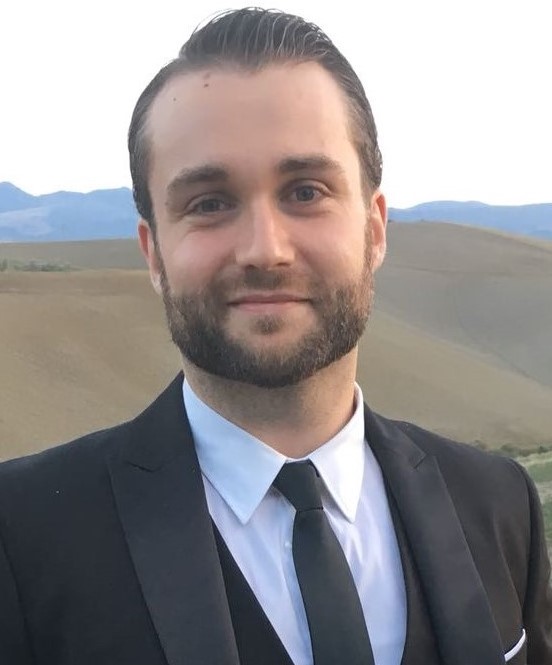

Giulio Poli was born in San Miniato (Pisa) in June 1987.
He graduated with top marks (110/110 cum laude) in Medicinal Chemistry (5-year degree course) in 2012 at the Faculty of Pharmacy, University of Pisa (Italy).
In the same year, he won a 3-year PhD fellowship in Science of Drug and Bioactive Substances at the same University, and in 2016 he obtained an International PhD degree in Medicinal Chemistry.
Between 2014 and 2015, he spent a research period of more than a year as a Visiting PhD student in the research group of Professor Thierry Langer, at the Chemoinformatik Labor of the Department of Pharmaceutical Chemistry, Faculty of Life Sciences, University of Vienna (Austria).
In 2016, after obtaining his PhD, he won a research fellowship for computational studies on antiviral compounds at the Department of Biotechnology, Chemistry and Pharmacy, University of Siena (Italy). He worked as a Post-Doctoral Researcher in the group of Professor Maurizio Botta on the identification of novel Zika virus inhibitors within the context of the ZIKAlliance international research consortium.
In 2018 he obtained a Research Scientist position in Medicinal Chemistry at the Department of Pharmacy, University of Pisa (Italy) and started working as a Computational Medicinal Chemist at the Molecular Modeling and Virtual Screening Laboratory. In 2021 he achieved the position of Senior Research Scientist.
At present, he published more than 80 papers in international scientific journals, with an H-index of 22, and participated as a speaker in various national and interational workshops and congresses. He is currently Associate Editorial Board Member of the journal Current Enzyme Inhibition, Topic Editor of the International Journal of Molecular Sciences and member of the scientific and organizing committee of the Computer-Aided Drug Design International Summer School, at the Department of Pharmacy, University of Pisa, Italy.
RESEARCH INTERESTS:
Development of efficient VS protocols and innovative computational procedures for the identification of hit/lead compounds of various protein targets, ligand binding mode prediction and energetic/mechanicistic analyses, lead and hit-to-lead optimization studies. He is also currently focused on the in silico evaluation of the potential deleterious impact of missense mutations in structure and/or functions protein targets related to genetic diseases.

